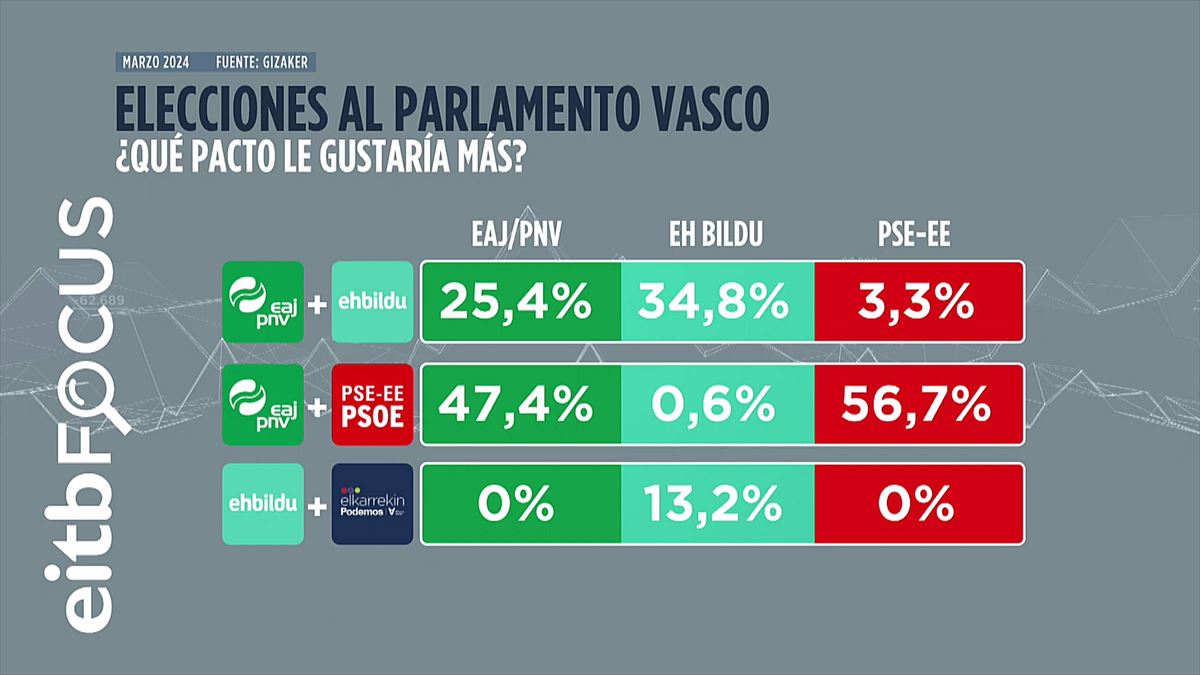Although there is no majority option and almost three in ten voters are still unclear about their preference, the two most desired coalition governments are PNV-EH Bildu in first place, and PNV-PSE in second.
The citizens of Euskadi do not have a majority preference on which parties should agree to form the next Basque government, although there are two options that stand out: an executive consisting of PNV and EH Bildu in the first place, and the republication of the current pact between PNV and PSE-EEsecondly, according to EITB focus.
In concrete terms, an eventual government formed by the Jeltzale formation and the sovereigntist coalition is the most supported option, with 22.8% support.
The pact between PNV and PSE-EE is only three points lower, with 19.4%.
And as statistically remaining alternatives, they are followed by a pact EH Bildu-Elkarrekin We can do that (4.7%), EH Bildu-Elkarrekin-Sumar (3.9%) and EH Bildu-PSE (3.4%).
Anyway, 28.1% of voters almost 3 in 10 are not clear about their preference.
And a curiosity: coalition governments appear to have had a major impact in the Basque political imagination, as government options have only barely been mentioned by a minority in their spontaneous responses.
For example, only 2.5% of citizens argue for a monochrome EH Bildu government, and 2.2% for a PNV government.

What do voters think of each party?
On the other hand, the pact between PNV and PSE-EE is the government option preferred by voters of both parties, while that of EH Bildu is betting on a coalition with the Jeltzale formation.
In this sense, 47.4% of the electorate is from the PNV wants a government agreement with the PSE-EE, compared to 25.4% who support a coalition with EH Bildu.
Similarly, 34.8% of voters from EH Bildu opt for a government with the Yeltzale party, and 13.2% opt for a pact with Elkarrekin Podemos.
Among the voters of PSE-EE56.7% support the current pact with the PNV, while the rest of the alternatives barely reach 3%.
Data sheet
1,800 people living in the BAC were interviewed to prepare the EITB Focus survey (600 in each historical area).
The fieldwork was conducted from March 8 to 14 through telephone interviews.
All data, microdata and other statistical aspects can be consulted in the Open Data section of the EITB Group Transparency Portal.
Source: EITB
I am Ida Scott, a journalist and content author with a passion for uncovering the truth. I have been writing professionally for Today Times Live since 2020 and specialize in political news. My career began when I was just 17; I had already developed a knack for research and an eye for detail which made me stand out from my peers.



